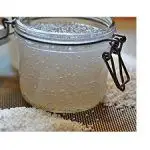You certainly might not have thought that sleep and rest are two different things. Although they aim for the same thing, i.e., to relax the body both physically and mentally, they are two different processes. Resting is a state where our body is chilled out from a stressed routine. It is a kind of activity that a person frequently does in order to regain his lost freshness … [Read more...] about Difference Between Sleep and Rest
Science
Difference Between Prism and Pyramid
People often get confused between prism and pyramid due to their very similar appearance. But there are plenty of differences that distinguish them into two geometrical categories. The prism, on one hand, has two bases that are congruent to each other. Its sides are rectangular in shape. As well as these sides are perpendicular to both the bases. In contrast, the pyramid … [Read more...] about Difference Between Prism and Pyramid
Difference Between Biochemical Oxygen Demand (BOD) and Chemical Oxygen Demand (COD)
Biochemical Oxygen Demand (BOD) is the measurement of the amount of oxygen consumed by aquatic microorganisms to decompose or to oxidize the organic matter. On the other hand, Chemical Oxygen Demand (COD) refers to the amount of oxygen needed to break down the pollutants chemically. BOD and COD are correlated, as both are the methods with the aim of indicating the amount of … [Read more...] about Difference Between Biochemical Oxygen Demand (BOD) and Chemical Oxygen Demand (COD)
Difference Between Lyophilic and Lyophobic Colloids
The solvent-loving colloids or such colloids which show less or distinct affinity towards dispersion medium is known as Lyophilic colloids. The solvent-hating colloids or such colloids which do not have any attraction towards dispersion medium is known as Lyophobic colloids. The colloidal state is said when the particle size is between 1 to 100 nm. When the particle size is … [Read more...] about Difference Between Lyophilic and Lyophobic Colloids
Difference Between Kwashiorkor and Marasmus
Kwashiorkor is the severe protein deficiency in the children, while marasmus is the severe deficiency of the nutrients and insufficient intake of calorie. This is the primary difference between the two. Protein-energy malnutrition (PEM) or Protein-calorie malnutrition (PCM) is the result of the deficiency of the carbohydrates, fats and especially proteins. The above two … [Read more...] about Difference Between Kwashiorkor and Marasmus





